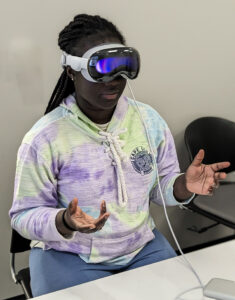Pupil dilation as cognitive load measure in instructional videos on complex chemical representations
Marc Rodemer, Jessica Karch, and Sascha Bernholt
Frontiers in Education
Abstract
This secondary analysis of an earlier eye-tracking experiment investigated how triangulating changes in pupil dilation with student-self reports can be used as a measure of cognitive load during instructional videos with complex chemical representations. We incorporated three signaling conditions, dynamic, static and no signals, into instructional videos to purposefully alter cognitive load. Our results indicate that self-reported extraneous cognitive load decreased for dynamic signals compared to static or no signals, while intrinsic cognitive load was not affected by the signaling condition. Analysis of pupil dilation show significantly larger pupils for dynamic signals as compared to the other two conditions, suggesting that when extraneous cognitive load decreased, students still engaged cognitively with the task. Correlation analyses between measures were only significant for pupil dilation and extraneous cognitive load, but not pupil dilation and intrinsic cognitive load. We argue that beneficial design choices such as dynamic signals lead to more working memory capacity that can be leveraged toward learning. These findings extend previous research by demonstrating the utility of triangulating self-report and psychophysiological measures of cognitive load and effort.












